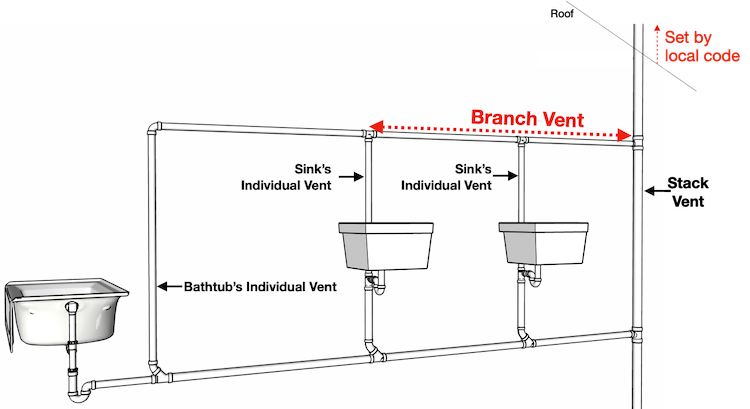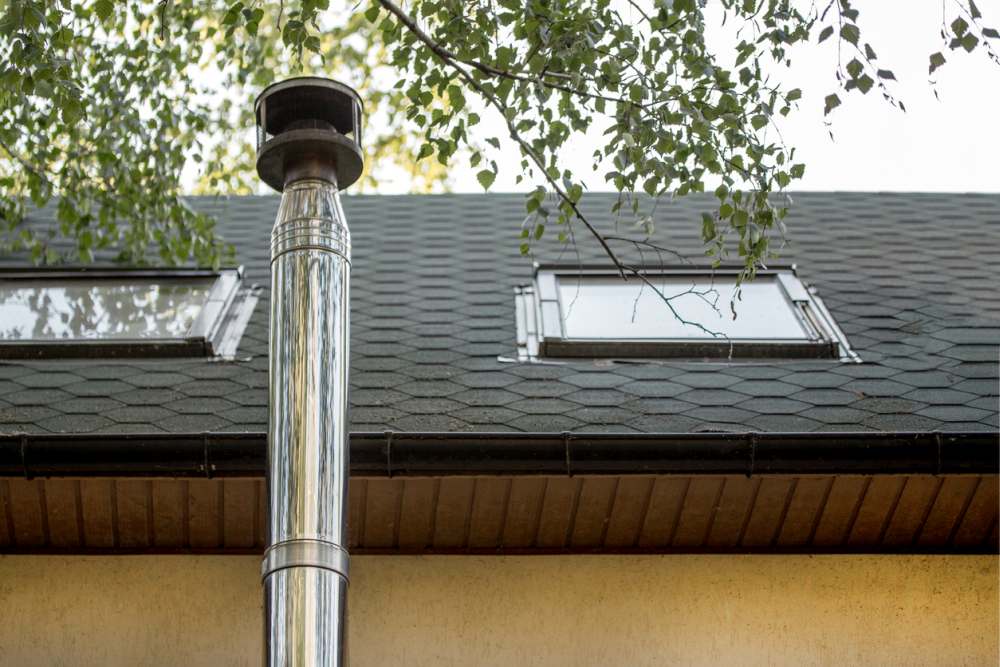How Proper Ventilation is Essential for Plumbing Systems
How Proper Ventilation is Essential for Plumbing Systems
Blog Article
The writer is making several great pointers about What Is a Plumbing Vent and Why Is It Important as a whole in this post in the next paragraphs.

Appropriate ventilation in plumbing systems is often overlooked, yet it is important for preserving the performance and security of your home's plumbing. Ventilation helps regulate atmospheric pressure, stop the build-up of damaging gases, and make sure the reliable elimination of waste. In this overview, we will certainly explore the significance of appropriate pipes ventilation, just how it works, and the benefits it brings to your plumbing system.
Comprehending Ventilation in Pipes
Air flow in plumbing describes the network of pipes that enable air to flow via the water drainage system. These vents offer several objectives, including controling atmospheric pressure within the pipelines, preventing drain gases from getting in the home, and assisting in the smooth flow of wastewater.
Just How Air Flow Functions in Pipes Systems
Atmospheric Pressure Policy
Appropriate air flow keeps well balanced atmospheric pressure within the pipes system. When water streams through pipelines, it displaces air. Without ample air flow, this displacement can create unfavorable pressure, resulting in slow drains or siphoning of water from traps, which can create unpleasant smells to permeate into the home.
Stopping Sewer Gas Buildup
One of one of the most critical features of pipes vents is to prevent sewer gases, such as methane and hydrogen sulfide, from collecting within the home. These gases can posture significant wellness dangers and are extremely combustible. Vent pipes allow these gases to leave safely outside.
Assisting in Waste Removal
Ventilation helps in the efficient removal of wastewater by stopping airlocks in the water drainage system. When air can move openly through the vents, it permits water and waste to flow efficiently with the pipelines, lowering the risk of clogs and back-ups.
Kinds Of Plumbing Vents
Main Stack Vent
The major pile vent, also referred to as the air vent stack, is the main vent in a pipes system. It expands from the primary drainpipe line up via the roofing, allowing gases to get away and fresh air to enter the system.
Branch Vent
Branch vents link to the major stack air vent and serve private components, such as sinks, toilets, and showers. These vents make sure that each fixture has appropriate ventilation to work correctly.
Air Admission Valve (AAV).
An Air Admittance Shutoff (AAV) is a one-way valve that permits air to enter the plumbing system without the requirement for a traditional vent pipe extending through the roofing system. AAVs are frequently utilized in restorations or areas where installing a common vent is impractical.
Signs of Poor Ventilation in Plumbing.
Slow Draining Fixtures.
If your sinks, tubs, or bathrooms are draining pipes slowly, it could be an indicator of inadequate air flow. Inadequate air flow can create a vacuum cleaner effect, making it challenging for water to drain pipes effectively.
Gurgling Seems.
Gurgling audios originating from drains are often an outcome of air being drawn with water catches because of negative stress in the pipelines. This is a clear sign of not enough ventilation.
Unpleasant Smells.
Drain smells inside your home are a warning that your pipes system is not appropriately aerated. This might mean that sewage system gases are not being appropriately aired vent outside, bring about possibly hazardous conditions.
Typical Air Flow Errors.
Insufficient Vent Sizing.
Making use of small air vent pipes can lead to bad air circulation and stress discrepancies in the system. It's important to use vents that meet the specific needs of your plumbing system.
Improper Vent Positioning.
Positioning vents as well much from the components they offer can minimize their performance. Appropriate placement makes sure that air can stream freely and efficiently via the system.
Disregarding Code Demands.
Building ordinance give certain guidelines for pipes ventilation. Disregarding these codes can cause a system that fails to operate properly and might bring about expensive fixings or carcinogen.
Advantages of Correct Air Flow.
Boosted System Performance.
Effectively aerated plumbing systems operate a lot more efficiently, with fewer obstructions, faster draining, and less stress on the pipelines. This performance expands the life-span of the pipes system.
Improved Air Top Quality.
By preventing sewer gases from entering your home, appropriate ventilation contributes to far better interior air quality, making your living setting healthier and extra comfy.
Stopping Water Damages.
Appropriate air flow aids stop water from being siphoned out of catches, which can result in sewer gases entering the home and causing water damage in time.
Steps to Make Sure Appropriate Ventilation.
Consulting Pipes Codes.
Constantly get in touch with local plumbing codes when creating or changing your pipes system. These codes offer the necessary guidelines for proper airing vent and ensure your system fulfills safety and security criteria.
Routine Inspection and Upkeep.
Regular evaluations can aid determine potential air flow concerns before they end up being major problems. Maintenance tasks, such as cleaning up vent pipelines and looking for blockages, are vital for keeping the system in good working order.
Professional Installment.
For new installations or major alterations, it's important to hire a professional plumbing professional. They have the experience to make certain the ventilation system is properly designed and set up according to code.
Verdict.
Correct ventilation is a vital part of any kind of pipes system, guaranteeing that it works successfully and safely. By comprehending the significance of ventilation, identifying the signs of bad ventilation, and taking steps to preserve your system, you can stop pricey problems and shield your home's air quality.
4 Things You Should Know About Your Plumbing Vents
What Plumbing Vents Are
Also called a vent stack, a plumbing vent is a vertical pipe attached to your drain line that runs through your roof. The plumbing vent pipe, or plumbing air vent, removes gas and odors from your plumbing system and allows fresh air to enter the pipes, helping the water to flow out of the drain pipes.
What Plumbing Vents Do
Plumbing vents have two basic functions. One of which is to allow unpleasant smelling wastewater and sewer gasses to escape your plumbing system instead of entering your home. Plumbing vent pipes are typically located on roofs, away from windows, to ensure the fumes exit the home completely.
The other function of the plumbing vent is to move fresh air into your plumbing system. This helps move water through every plumbing fixture in your house, like toilets and sink drains. Think of the way in which you need to let a little air into the bottle as you pour soda in order to make the drink flow smoothly.
Different Types of Plumbing Vents
True vent: This is the most common vent option. In simplest terms, a true vent is a vertical pipe attached to your drain line that exits through the roof. They often function as the main vent that other fixtures can connect to. Re-vent pipe or auxiliary vent: Attached to the drain line near specific plumbing fixtures, re-vent pipes run up and over to connect to the main vent. Common vent: Two plumbing fixtures installed on opposite sides of a wall are typically tied into the vent stack using something known as a sanitary cross. Wet vent: This venting option operates as a drain pipe and a vent at the same time. Wet vent drainage systems drain water from one fixture while venting the air from another. Although they’ve been used for over 100 years, wet vent systems have only recently been added to the plumbing code in many areas. If you’re planning on installing one in a bathroom remodel, make sure you check your local code prior to construction. Loop vent: For free-standing fixtures like kitchen island sinks, loop vents are ideal. These vent pipes run under the floor, rise from the P-trap, and create a loop inside the cabinet sink. Air admittance valve: An AAV is a one-way mechanical valve typically installed at the site of the plumbing fixture. AAVs allow venting to occur without having to tie into a larger venting system. They’re ideal for venting fixtures where you aren’t able to easily connect to an existing vent system. Common Plumbing Vent Issues
Although vent pipes typically don’t have water flowing through them, they’re still subject to many typical plumbing issues. For example, clogs are one of the most common problems associated with sewer vent pipes. If your vent pipe gets clogged, all of your plumbing fixtures tied into the vent stack will be affected.
A sink with a slow drain that bubbles and gurgles or a strong sewage smell around your toilet are both indicators that your toilet vent pipe is clogged. Because most vent pipes exit through the roof, old leaves, twigs or even a bird’s nest could be clogging the pipe.
Clogs in your vent pipe system cause a buildup of negative pressure, meaning that water won’t be able to flow out of your home very well. It’s similar to putting your finger over the opening of a straw to trap water inside. When you remove your finger, the water is able to flow out of the straw.
If you suspect you have any blockage in your vent, make sure you have a professional come examine the situation. Left unchecked, a blocked air vent can lead to other costly repairs, like leaks and sediment buildup.
Under Pressure
Pipe vents are essential aspects of a home’s plumbing system. Owning a home means learning about all sorts of things you never put much thought into before. But by understanding as much as you can about the important systems of your home, you can keep those budgets intact and those anxiety levels low.
https://www.homeserve.com/en-us/blog/home-improvement/plumbing-vents/

Do you appreciate reading about ? Try to leave a remark directly below. We will be glad to see your opinions about this article. In hopes that you come back again in the near future. Liked our post? Please quickly share it. Help another person check it out. Thank-you for taking the time to read it.
Book An Estimate Now Report this page